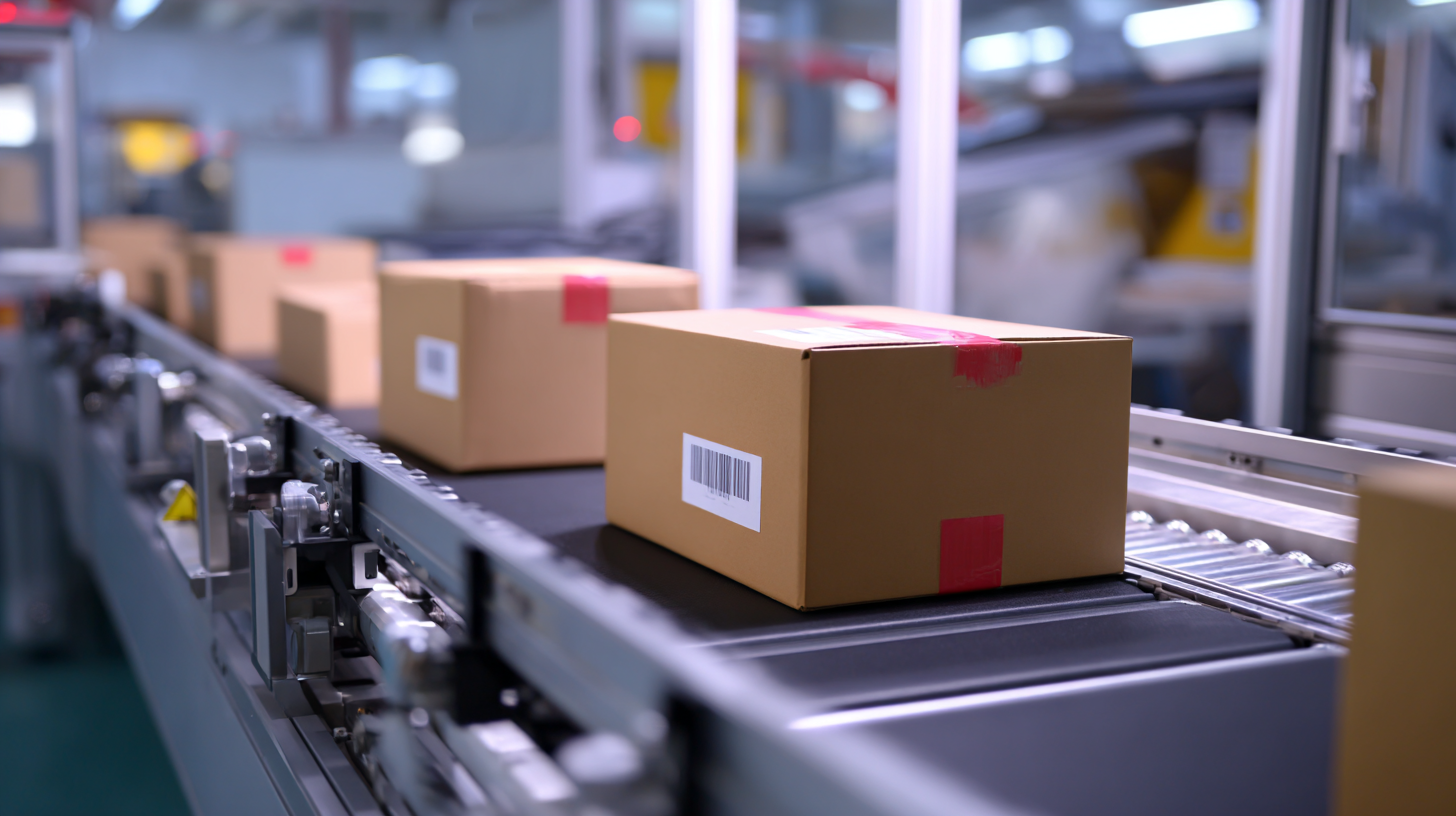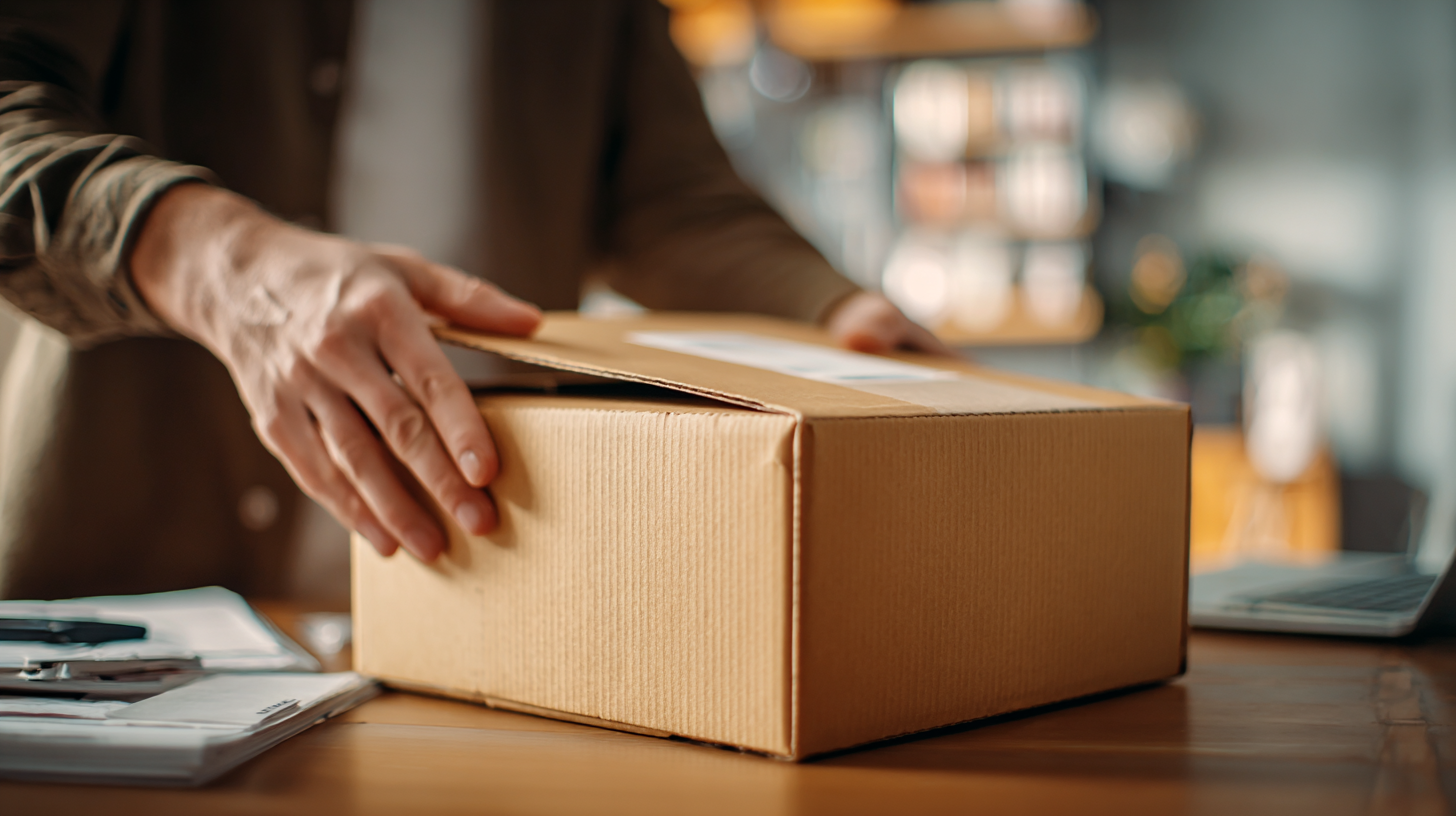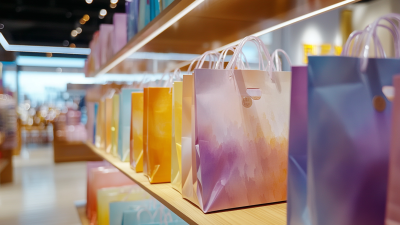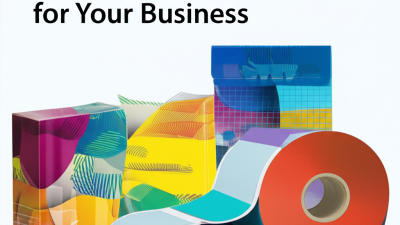Exploring the Innovations in Packaging and Printing that are Shaping the Future of E-Commerce
The rapid expansion of e-commerce has been accompanied by significant innovations in Packaging and Printing, which are crucial for enhancing customer experience and operational efficiency. According to a report by Smithers Pira, the global packaging market is expected to reach $500 billion by 2024, with a substantial portion driven by e-commerce demands. These innovations not only improve the functionality and aesthetic appeal of packaging but also contribute to sustainability efforts, a key concern for modern consumers. Additionally, the adoption of smart packaging technologies is projected to grow at a CAGR of 7.9% over the next five years, as brands seek to integrate more interactive and eco-friendly solutions into their logistics. As businesses strive to differentiate themselves in a crowded marketplace, the role of advanced Packaging and Printing strategies will be paramount in shaping the future of e-commerce, making it essential for stakeholders to stay ahead of these transformative trends.

Innovative Materials Revolutionizing E-Commerce Packaging
The rise of e-commerce has propelled the demand for innovative packaging solutions, with materials playing a pivotal role in enhancing delivery efficiency and sustainability. A report by Smithers Pira estimates that the global market for packaging materials will reach $1 trillion by 2024, highlighting the increasing focus on cutting-edge materials. Companies are now choosing biodegradable plastics, recycled paper, and compostable films to meet consumer expectations for environmentally friendly practices. This shift not only reduces waste but also aligns with sustainability goals crucial for modern businesses.
In addition to sustainability, innovations like smart packaging are transforming the e-commerce landscape. According to a MarketsandMarkets report, the smart packaging market is expected to grow from $35.4 billion in 2020 to $46.4 billion by 2025, at a CAGR of 5.5%. This includes features such as QR codes and NFC technology that provide real-time tracking and enhance customer engagement. As these materials and technologies evolve, they become vital in creating a personalized and efficient unboxing experience, ultimately shaping the future of e-commerce packaging.
Exploring the Innovations in Packaging and Printing that are Shaping the Future of E-Commerce - Innovative Materials Revolutionizing E-Commerce Packaging
| Material Type | Key Features | Sustainability Rating | Cost Efficiency |
|---|---|---|---|
| Biodegradable Plastic | Compostable, reduces plastic waste | High | Moderate |
| Recycled Paper | Retail-friendly, customizable print | Very High | Low |
| Plant-based Inks | Low VOC emissions, safe for products | High | Moderate |
| Mushroom Packaging | Completely biodegradable, renewable | Very High | High |
| Smart Packaging | Integration with RFID, real-time tracking | Moderate | Variable |
Customized Branding through Advanced Printing Solutions
In the competitive landscape of e-commerce, customized branding through advanced printing solutions is becoming a vital strategy for businesses seeking to differentiate themselves.
Personalized packaging not only enhances the unboxing experience but also creates a lasting impression on customers. Innovations such as digital printing technologies allow for shorter production runs and intricate designs, enabling companies to tailor their packaging to align with specific customer demographics or seasonal promotions. This level of customization fosters brand loyalty and helps businesses express their unique identity effectively.
Moreover, sustainability has emerged as a crucial consideration in packaging design.
Advanced printing techniques now utilize eco-friendly inks and recyclable materials, appealing to environmentally conscious consumers. Brands are finding innovative ways to combine eye-catching graphics with sustainable practices, ensuring their packaging tells a story that resonates with their audience. By integrating customized branding with a focus on sustainability, e-commerce companies can not only enhance their market presence but also contribute positively to the environment, setting a new standard in the industry.
Sustainable Packaging Trends Driving E-Commerce Growth
The surge in e-commerce has brought significant changes in packaging practices, with sustainability emerging as a key trend driving growth. As consumers become increasingly conscious of their environmental impact, businesses are responding by adopting eco-friendly materials and practices. Biodegradable packaging, reusable containers, and minimalistic designs are just a few innovations being explored. These sustainable options not only address environmental concerns but also enhance brand loyalty among consumers who prioritize sustainability in their purchasing decisions.

Moreover, the use of innovative printing technologies plays a crucial role in communicating a brand's commitment to sustainability. Eco-friendly inks and digital printing techniques allow companies to produce eye-catching designs while reducing waste. This shift not only helps in creating visually appealing packaging but also aligns with the principles of sustainability, showcasing the brand’s values transparently. As e-commerce continues to expand, the integration of sustainable packaging solutions will be essential in meeting consumer demand and fostering a more environmentally responsible future for the industry.
Technology Integration in Packaging for Enhanced Customer Experience
As e-commerce continues to thrive, the integration of technology in packaging is becoming crucial for enhancing customer experience. According to a recent report by Smithers Pira, the global smart packaging market is projected to reach $31.5 billion by 2024, highlighting the increasing importance of innovative solutions in packaging. This technology not only optimizes the delivery process but also adds a layer of interactivity that can engage customers in new ways. For instance, augmented reality (AR) packaging allows consumers to scan a product's packaging with their smartphones to access personalized content, leading to improved satisfaction and brand loyalty.

Furthermore, sustainable packaging technologies are on the rise, with a study from Market Research Future indicating that the sustainable packaging market is expected to grow at a compound annual growth rate (CAGR) of 5.7% through 2025. Brands are now utilizing eco-friendly materials that not only reduce their carbon footprint but also resonate with environmentally-conscious consumers. Features like QR codes on packaging can streamline the recycling process by directing customers to proper disposal instructions, ensuring a circular economy and elevating the overall shopping experience. As technology continues to evolve, packaging will play a pivotal role in shaping the future landscape of e-commerce.
The Role of Smart Packaging in the Future of Online Shopping
Smart packaging is revolutionizing the e-commerce landscape by enhancing consumer experience and operational efficiency. With the integration of technology such as QR codes, RFID tags, and NFC, smart packaging allows users to interact with products in ways that were previously unimaginable. This innovation not only provides vital information about the products but also enables tracking and monitoring throughout the supply chain. For example, customers can verify the authenticity of luxury goods or receive personalized promotions, turning the packaging itself into an engaging touchpoint for brands.
Moreover, smart packaging plays a crucial role in sustainability efforts within the online shopping sphere. Many companies are now adopting biodegradable and recyclable materials, combined with smart sensors that can indicate when a product is no longer safe for consumption. This not only reduces waste but also educates consumers on responsible disposal methods. As e-commerce continues to grow, embracing smart packaging technologies will be essential for businesses aiming to meet customer expectations and address environmental concerns, paving the way for a more sustainable and interactive shopping experience.
Related Posts
-

Unlocking Global Opportunities: Insights from the 137th Canton Fair for Packaging Printing Suppliers
-

Personalized Packaging Bags Shine at the 137th Canton Fair with Record International Buyers
-

Comparative Analysis of the Top 5 Best Personalized Packaging Bags: Driving Brand Loyalty and Sales Growth
-

Unleashing China's Manufacturing Excellence Through Best Personalized Packaging Bags
-

Advantages of Choosing the Best Package Printing for Your Business
-

What is the Importance of Package Printing in Modern Marketing Strategies
